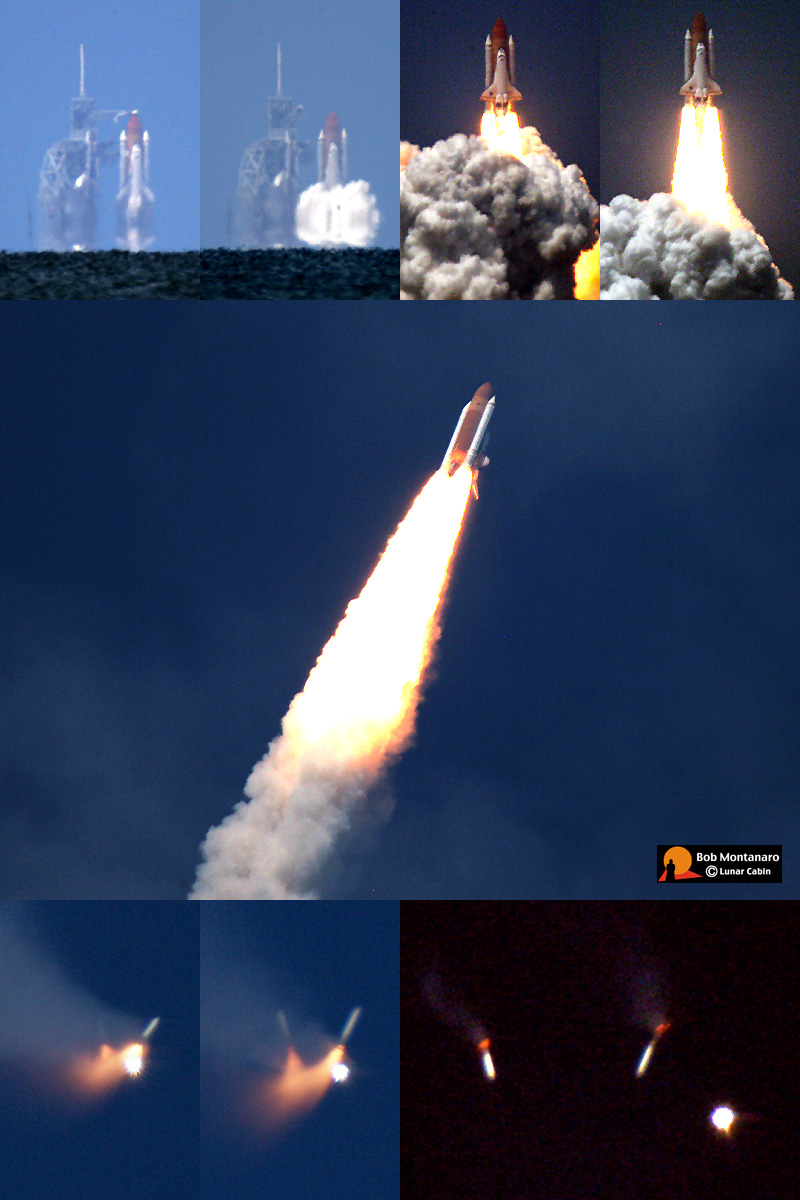 |
|
 |
|
The Space Shuttle Atlantis lifts off on its final planned mission (STS-132)---the third to last mission before the end of the Space Shuttle Program on a construction and resupply flight to the International Space Station. Liftoff with a crew of six occurred at 2:20 p.m. from Kennedy Space Center on 14 May 2010. Atlantis also carries a sample of the tree from which the apple fell and hit Isaac Newton on the head leading Newton to devise his theory of gravity. Below are excerpts from NASA press releases about the mission and Atlantis: Atlantis’ 12-day mission will deliver the Russian-built Mini Research Module-1 that will provide additional storage space and a new docking port for Russian Soyuz and Progress spacecraft. MRM-1, also known as Rassvet, which means dawn in Russian, will be permanently attached to the bottom port of the station’s Zarya module. MRM-1 will carry important hardware on its exterior including a radiator, airlock and a European robotic arm. Atlantis also will deliver additional station hardware stored inside a cargo carrier. Three spacewalks are planned to stage spare components outside the station, including six spare batteries, a Ku-band antenna and spare parts for the Canadian Dextre robotic arm. Shuttle mission STS-132 is the final scheduled flight for Atlantis. Space shuttle Atlantis’ spaceflight career began on Oct. 3, 1985, with launch on its maiden voyage to begin STS-51J a dedicated Department of Defense mission. It was the fourth orbital vehicle manufactured following Columbia, Challenger and Discovery. Construction of Atlantis, referenced internally by its airframe number OV-104, began in March 1980 at the Palmdale, Calif., manufacturing plant. It was transported to Kennedy Space Center in April 1985 ahead of its maiden voyage. Atlantis was named after the primary research vessel for the Woods Hole Oceanographic Institute in Massachusetts from 1930 to 1966. The two-masted, 460-ton ketch was the first U.S. vessel to be used for oceanographic research. Such research was considered to be one of the last bastions of the sailing vessel as steam-and-diesel-powered vessels dominated the waterways. Space shuttle Atlantis has carried on the spirit of the sailing vessel with voyages of its own, including missions to the Russian Space Station Mir, deployment of the Galileo planetary spacecraft in 1989 and the deployment of the Arthur Holley Compton Gamma Ray Observatory in 1991. ATLANTIS BY THE NUMBERS |
|
All contents copyright Lunar Cabin |
|